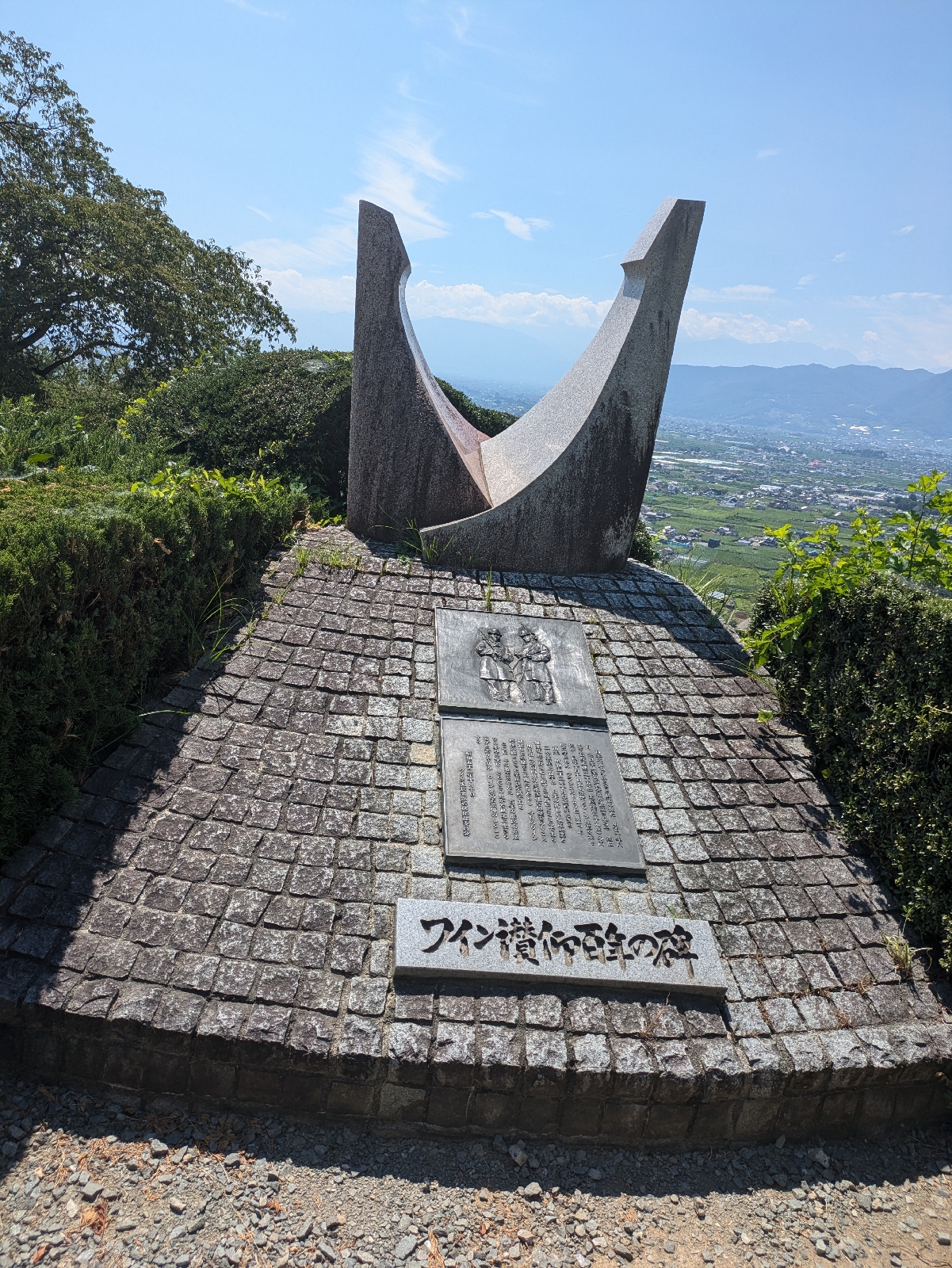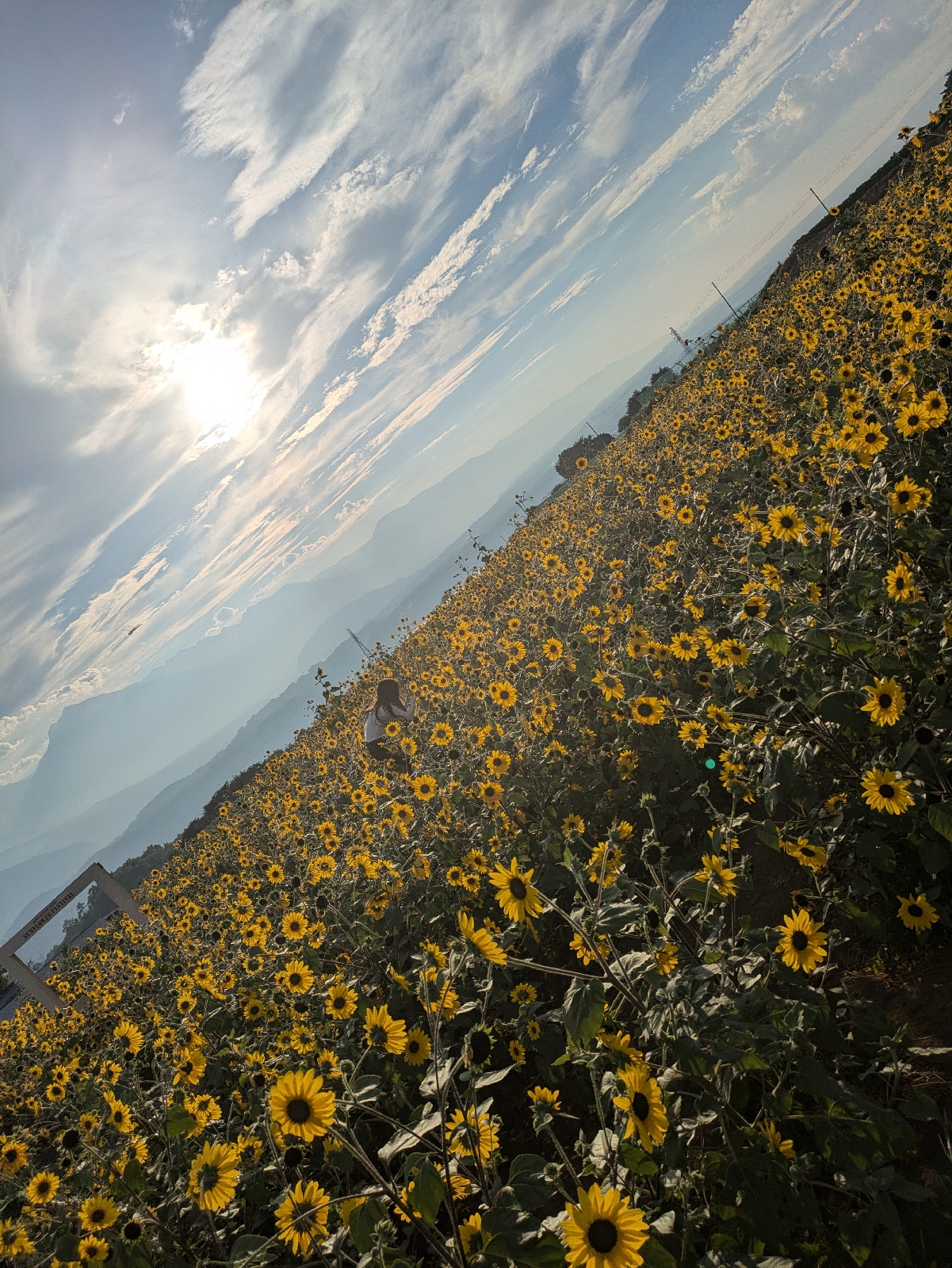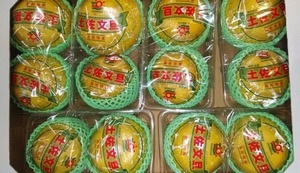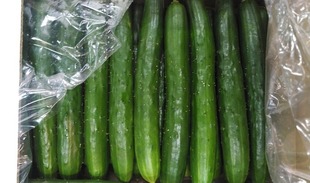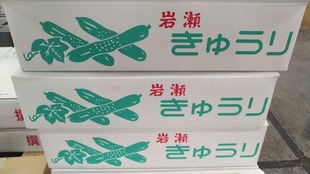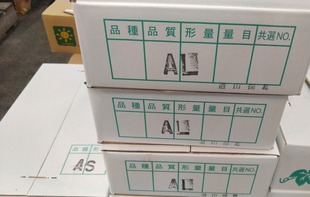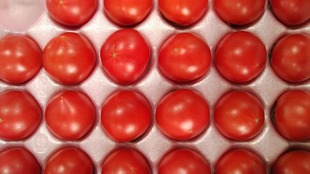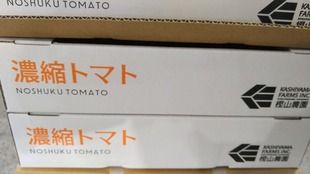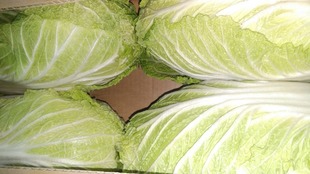【Product name】
Black Beat
【Type】
Vitis L.
【Production area】
Hishiyama, Katsunuma Town, Koshu City, Yamanashi Prefecture (JA Fruits Yamanashi)
【Origin of name】
It’s a grape that combines the two good points of the parent, and the grain size has an impact. But, I still haven't studied enough.
Following the death of Seki Shinpei, it was Mae Yamanashi Governor Shirou Fujimura who was appointed as Ehime Prefecture Governor on March 9, 1887. He was a Kumamoto feudal lord born in 1845 and was called Kayano Kaemon. Since the Meiji Restoration, after following military relations such as Go-shinhe place of assembly stuffing, Hokuetsu destination Assistant Deputy Genera, Hyobu Gonsho, etc. It became a prefectural ordinance in October 1874, and since then he has been in Yamanashi prefecture for more than 14 years until he was transferred to Ehime prefecture, establishing the foundation of prefectural government. His Yamanashi prefectural government was promoted in various fields such as education, hygiene, breeding, roads, and hydraulic control, starting with the development of administrative structures, and it seems that the breeding industry promotion policy centered on sericulture silk reeling was particularly remarkable. He also enacted the "Yamanashi Prefectural Ordinances and Rules" in January 1876, and in May 1877, he opened a special prefectural assembly to discuss private expenses, ferocious reserve savings, and elementary school expenses. Furthermore, in the appointment of the head county official for the same two years, he appointed a local influential person, and it seems that a free civil rights activist was also persuaded to serve. His measures are Takatoshi IWAMURA (born in Sukumo City, Kochi Prefecture. After the Meiji Restoration, he served as the local secretary of each prefecture, and at the time of the Saga Prefectural Government Ordinance, with the cooperation of his brother michitoshi, he calmed down the Saga Rebellion led by shinpei ETO. In 1892, he was also selected as a member of the aristocratic institute, but since then he has served as governor of each prefecture such as Fukuoka and Hiroshima prefectures one after another. It was known nationwide as the Kaimei Prefectural Ordinance. However, the measure has a tendency to be self-reliant without waiting for the government's instructions, and has been punished by repeated reprimand. It seems that the promotion of sericulture was the most important thing he put into Ehime prefecture as soon as he arrived in Ehime prefecture. 5093 Hishiyama, Katsunuma Town, Koshu City: “Katsunuma Vineyard” is a tourist facility operated by the city, which stands on a small hill in the vineyard that spreads out at the eastern end of the Kofu Basin. In the underground wine cave, there are always 150 to 200 brands of wine that have passed the quality examination committee sponsored by the city. Also, if you buy a special container (Tart Van), you can sample each brand. At the hot spring facility “Tenku no Hot Water”, you can enjoy high-quality hot springs while watching the scenery of the Kofu basin below. It is said that the wine restaurant prepares dishes that match the wine produced in Koshu City. In addition, there are barbecue facilities, a light meal lounge in the sky, and an adjacent museum. The accommodation facility is said to have hot springs in all rooms. It was decided on July 19, 2019 that six buildings that tell the history of winemaking will be added to the national registered tangible cultural properties. The National Council for Cultural Affairs reported to the Minister of Education, Culture, Sports, Science and Technology at the main building and storage of the winery built from the Meiji era to the postwar period. For details, there are 6 cases: Marufuji Winery's old brewery and bottle storage, Katsunuma brewing's main house and office and barrel storage, Kuramubon wine's old main house and wine cellar. According to the City Board of Education, there are four Japanese-style wineries with main houses and stores in Katsunuma Town, where winemaking began in the Meiji era. Together with Haramo Wine, which was registered last year, the buildings of all four companies have become registered tangible cultural properties. It is customary for Yamanashi grapes and wine to originate from the Koshu variety. Before the Edo period, it seems that only this Koshu species was cultivated in Japan. In particular, the climate of Yamanashi Prefecture, which is rich in seasonal changes, is a soil and meteorological environment suitable for viticulture. Among them, as the optimum cultivation area for the Koshu species, which is the only native species in Japan, mainly in the Katsunuma area, it has extremely natural conditions, and it produces finer, more mellow and beautiful fruits. Wine is a combination of climate and people's hearts. The Koshu species belongs to the oriental group (Proles orientalis) of European descent (Vitis vinifera), but its origin is Gyoki-Ko (a monk of the Hosso sect of the Nara period. Born in Otori District (currently Osaka Prefecture). Learned from Michiaki, a high priest of the Hosso sect, and worked on private missions especially for farmers. There are many temples such as Daizenji Temple, Unpouji Temple, and Hojoji Temple that are said to have opened Gyoki-Ko.) Introduction theory and the resident of Mr. Kageyu Amemiya Residents of the village (currently Katsunuma Town). In 1186, on the way back from the “Shironohira” festival, he discovered a wild vine and moved it to his own field to cultivate it. This is said to be the origin.Koshu grapes were presented to Mr. Kageyu on the way back to Zenkoji Temple.) There is a legend, and it is alive as a story unique to Katsunuma, but in any case, it has a long history of 1280 to 810 years based on both theories (Recently, as a result of DNA analysis, the Koshu variety is a European variety. It has been suggested that there is no contradiction in the theory that it inherited the genetic traits of the above and passed from Europe to China and Japan via the Silk Road). It can be inferred that the creativity of the shelves and the spread of their technology were epoch-making in the history of cultivation of Koshu species. In Japan, where the trees are vigorous and it rains a lot, it seems that the stock tailoring and hedge tailoring were not good. Taking advantage of this characteristic, Mr. Tokuhon Nagata, a Chinese medicine doctor (a doctor from the Muromachi period to the Edo period. He was also called “Tokuhon of Kai” because he lived in Kai Province for a long time. He first served Nobutora Takeda-Ko as a doctor, and later Shinano. After the destruction of the Mr. Takeda family, he returned to Kai. During the Genna period, he devised a method for shelving grapes in Kamiiwasaki Village (currently Katsunuma Town) and contributed to the development of grape cultivation. , It is said that Hidetada Tokugawa-Ko's illness was cured. However, there are many unclear points about the end of the Warring States period and the beginning of the Edo period.) Is said to have devised a method of making a shelf with bamboo and taught it to the villagers of Katsunuma. Viticulture on bamboo shelves continued until the early Meiji era, and in 1879, Mr. Sakuzaemon Amemiya of Kamiiwasaki came up with the idea of replacing bamboo with a thin iron bar. Furthermore, in 1908, Katsunuma Postmaster Mr. Kangoro Wakao built an iron wire shelf with the hint of the telegraph line arrangement, and established the foundation of the iron wire shelf that can withstand the heavy pressure by stretching the current branch line and branch line. On July 1, 1889, due to the enforcement of the town and village system, Katsunuma Village since the early modern period formed an independent municipality. On March 2, 1896, Katsunuma Village enforced the town system and became Katsunuma Town. On May 10, 1942, Katsunuma Town was established again by merging with Todoroki Village. On April 5, 1954, Katsunuma Town was established again by merging with Hishiyama Village, Shinonome Village, and Iwai Village, Higashiyatsushiro County. On November 1, 2005, Koshu City was established by merging with Enzan City and Yamato Village, and Katsunuma Town was abolished on the same day. “Koshu City, Yamanashi Prefecture”,(Concerning municipalities which changed characters for names and adopted old provincial names virtually, there are Mutsu City, Iwaki City, Sanuki City, Oushu City, and Koshu City.)になる. 甲府盆地の東側に位置し, 富士山, 南アルプス(The South Alps cover an area of over 300,000 ha across Yamanashi, Nagano and Shizuoka Prefectures.), 八ヶ岳(谷戸城跡: 史跡名勝天然記念物; 北巨摩郡大泉村(現: 北杜市): 指定年月日, 1993. 11/29, Located in the southern foothill of Yatsugatake, Henmiso had Henmi-no-maki, a livestock grazing land for ancient officials, spreading in the area, and Kiyomitsu settled in present Seikoji Temple area (Nagasaka-cho, Hokuto City) (alleged otherwise to be located at Wakamiko, Sudama Town, Hokuto City) and built Yato Castle (Oizumi Village, Hokuto City, Yamanashi Prefecture) as tsume-no-shiro, a retreat and backup castle.)The area is surrounded by lush green mountains, making it an ideal place for growing fruits. The famous "Erin-ji Temple" (His family temple was the Erin-ji Temple in Koshu City, Yamanashi Prefecture.) is the family temple of "Takeda Shingen" and his son "Katsuyori (Shiro)" is the family temple of "Keitoku-in Temple (Soto sect: Tendo-san)", 風林火山(During the period of the Northern and Southern Courts, which was about 200 years earlier than the period of Shingen, the banner was used by Akiie KITABATAKE-Ko as a Jinki (the flag for a camp) containing the emblem, Fu-Rin-Ka-Zan. Akiie KITABATAKE-Ko used this emblem on his flag and fought against Takauji ASHIKAGA-Ko until Takauji-Ko at one time was driven to take his own life in an instant. “Shingen TAKEDA” was not the first to use the battle flag of Fu-Rin-Ka-Zan. )で, お馴染みの「孫子の旗; 兵法(The Art of War (military text by Sun Tzu,512 BCE): Dou XIN said, the Art of War by Tzu SUN tells us that an obstinate attitude leads a small army to being captured by a large army. If the small army fiercely fights against the large army without considering the deference of their fighting strength, it will end up being captured. It is not a perfect plan to force tired soldiers to fight against the enemy that is increasing in number. We should withdraw. “The art of warfare of Sonshi (Chinese books about tactics) in the ancient China is famous in Japan, too. Hatajirushi: A flag of Sonshi (also known as a flag of Fu-Rin-Ka-Zan which literally means “Wind, Forest, Fire, and Mountain,” which was the motto of the feudal lord Shingen TAKEDA, quoted from Sonshi (Chinese books about tactics), meaning “swift as the wind, quiet as a wood, fierce as fire, and immovable as a mountain.”), a flag of Suwa Myojin (The Suwa Deity) )」や, 日本最古の「日の丸御旗(flag with a red circle on a white background)」を所蔵する「雲峰寺(臨済宗妙心寺派: 裂石山,(関連; 影武者: 黒澤明監督, 大菩薩峠: 中里介山(弥之助)氏)」, 武田家代々の家督の印とされる国宝「楯無鎧」を預かる「菅田天神社」(Tatenashi (no shield) (Kanda-tenjinja Shrine) – handed down from the Takeda clan.), 武田家と縁の深い社寺仏閣が数多く存在する. Katsunuma district, National / prefecture designated cultural property(甲州市勝沼地区)“国宝” 大善寺本堂附厨子 / 大善寺: 彫刻重要文化財, 木造薬師如来及両脇侍像, 木造十二神将立像, “史跡” 勝沼(武田信虎公, 弟君2代(信友氏))氏館跡, 勝沼町, 勝沼字御所 / 甲州市「名勝県指定文化財」, 大善寺庭園 / 大善寺三光寺庭園 / 三光寺 “記念物”, 萬福寺のムクノキ / 萬福寺 “建造物” 旧宮崎醸造所 /メルシャン大善寺山門 / 大善寺 “彫刻” 大善寺役行者椅像 / 大善寺大善寺日光月光菩薩立像, ”工芸品” 大善寺鰐口, “古文書” 大善寺文書,「工作物登録文化財」葡萄酒貯蔵庫, 堰堤, 祝橋. Temple of origin of Japanese grape cultivation - A “Bhaisajyaguru (buddha able to cure all ills)” holding a rare grape is enshrined. “Black beet Grape” : From the Ministry of Agriculture, Forestry and Fisheries variety registration, application number 13484, application date 2001/05/07, application publication date 2002/03/22, registration number 12075, registration date 2004/06/04, breeder's rights 25 years of life, extinction date of breeder's rights Name and address of variety registrant, Mr. Takao Kawano (Nagasaki, Shiranuhi Town, Uki City, Kumamoto Prefecture), Name of the person who raised the registered varieties Mr. Takao Kawano. This variety was cultivated by crossing “Pione” with “Fujiminori”, and in July in the growing area (Shiranuhi Town, Uto District, Kumamoto Prefecture) where the color of the skin is purple-black, the berries are short-oval and the largest grains are cultivated. It is a fairly early-maturing variety that matures in late. The spread of the tree is large, and the tree vigor is medium. The thickness of the mature shoots is thick, the color is dark brown, the shape of the internode cross section is elliptical, the surface shape is fine grooves, the color of the tip of the shoots is light red, and the tendrils are settled at 2. The number of spikes is medium, the flowering is amphoteric, and the amount of pollen is medium. The shape of the mature leaf blade is pentagonal, the number of splinters is 5, the shape of the cross section of the leaf blade is wavy, the shape of the leaf edge sawtooth is straight on both sides, the general shape of the petiole fissure is open, General shapes overlap, adult leaf size is large, upper surface color is dark green, petiole color is light red, fluff density between lower leaf veins of mature leaves is absent to extremely coarse, fluff on the lower main vein The density is coarse, the density of petiole fluff is absent to very coarse, the ratio of the length of the petiole to the middle rib is short, and the thickness of the petiole is medium. The spikes are thick, long, and light green in color. The shape of the fruit cluster is a divergent cone, the size is maximum, the length is long, the grain size is coarse, the fruit stem is thick, the length is medium, and the color is yellowish green. The shape of the fruit is short oval, the size is maximum, the color of the skin is bluish black or purple black, the amount of powder is large, the thickness of the skin is thick, the separability of the skin and the flesh is medium, and the color of the flesh is uncolored. The flesh is medium, the sweetness is medium, the acidity is low, the astringency is absent to very low, the aroma is absent, the amount of fruit juice is large, the number of seeds is small, the shape is medium, and the size is large. The germination period and flowering period are medium, the maturity period is quite early, and in the growing area, it is late July. The difficulty of coloring the fruit is medium, the flower sway is a little high, the mixture of drupe grains is high, the fruit cracking is low, the strength of the fruit stem is strong, and the separation of the fruit stem and the fruit grain is easy. Compared to “Kyoho Grape” and “Pione”, it is said that the distinction is recognized by the fact that the shape of the fruit is a short ellipse and there is no aroma. “Black beet Grape” is a large-grain grape that has the same flowering period as 'Kyoho Grape', but has good acid reduction and coloring and can be harvested about 10 days earlier than 'Kyoho Grape'. The sugar content is slightly lower than that of 'Kyoho Grape', but the acid content is low, so the taste is light and the taste is good. I heard that by immersing a 25 ppm solution of gibberellin with 10 ppm of Fulmet in a flower (fruit) bunch, it is possible to make a bunch of well-colored, non-nucleated, large-grained voluminous tufts. Enjoy the seedless grapes to the fullest.

Blackbeat grapes are varieties selected and bred from the seedlings born by Takao Kawano(Kono), who crossed "Fujiminori Grape" with "Pione Grape" in a field in Shiranuhi Town, Uto District, Kumamoto Prefecture in 1990. It is a hybrid variety of excellent pedigree, it looks and tastes good, and although it is a seedless grape, there is little bunch drop.
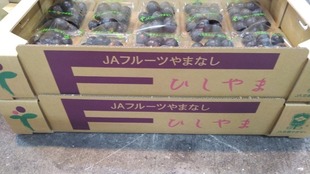
The Hishiyama district of Katsunuma Town (currently Koshu City), which has a deep history of grape production. The grapes caught in this area are called "Hishiyama brand" by experts who know the taste. The secret to the deliciousness of this grape lies in the slope of the mountain overlooking the Kofu Basin in Yamagata Prefecture. Although the soil in the Hishiyama area is clayey, it is well drained because it is a slope. In addition, the temperature difference between day and night is large, and the warmth of the day grows the grapes greatly, and the cold of the night seems to strengthen the sweetness of the grapes. The "Hishiyama brand" was created by accidentally combining favorable conditions such as soil quality, slope, water, and temperature differences. Cultivation of grapes on steep slopes is difficult, and cultivation has a history of extraordinary hardship and trial and error.
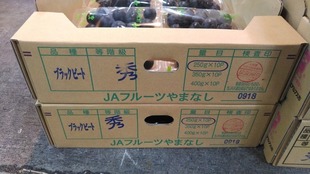
According to the Research bulletin of the Kumamoto Prefectural Agricultural Research Center on December 3, 2012, the flowering period is the same as that of Kyoho Grape, but it has good acid reduction and coloring and can be harvested about 10 days earlier than Kyoho Grape. It is a grape. The sugar content is slightly lower than that of Kyoho, but the acid content is low, so the taste is light and the taste is good. By immersing a 25 ppm solution of gibberellin in a flower (fruit) bunch, it seems that it is possible to make a bunch-shaped black beet that is well-colored, has no nuclei, and has a large voluminous feel. It is a valuable resource for workers.
